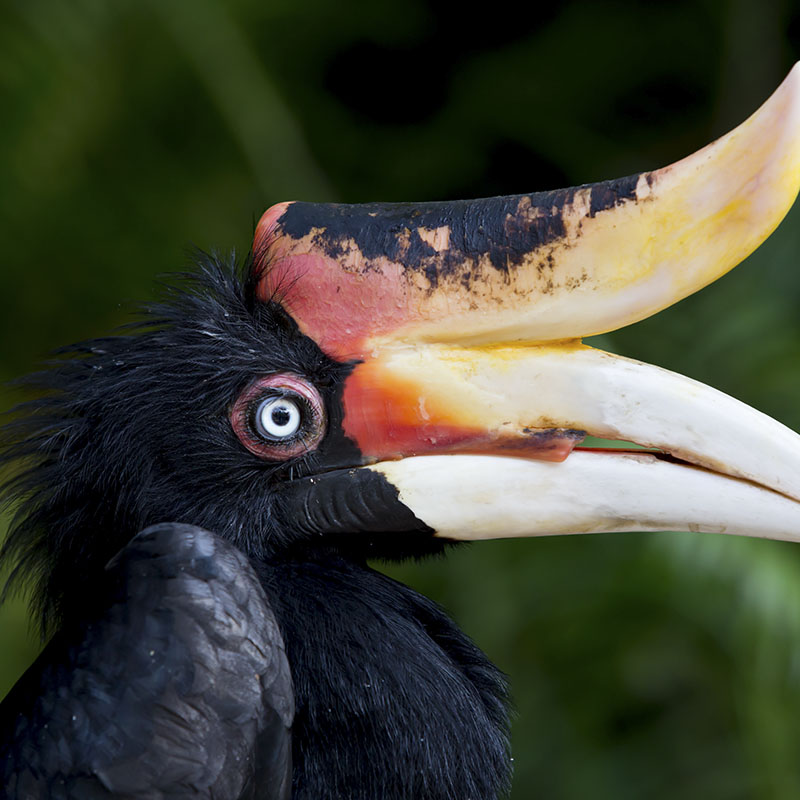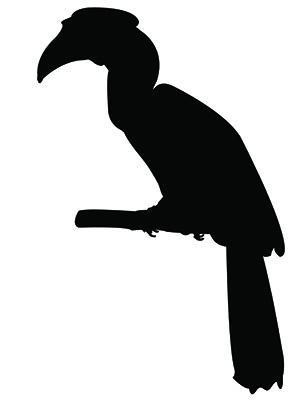Rhinocerous Hornbill
(Buceros rhinoceros)

Sumatran Island Montane and Lowland Forests
STATISTICS
Length up to
90 cm
Weight up to
2.9 kgs
Lifespan
35 years
Wingspan
150 cm
Flies - Monogamous - Social - Nest Builder
The Rhinoceros Hornbill’s name is inspired by its large casque, a feature resembling a helmet on its bill that it shares with some prehistoric dinosaur species from 60 million years ago. Its hollow structure is thought to amplify the bird’s call that can be heard throughout the dense rainforests of Sumatra, Indonesia. Though it is rarely seen as it lives high in the forest canopies, the Rhinoceros Hornbill’s beak is a marvel of nature that can perform a variety of tasks from building nests to harvesting food.
This species is monogamous and a pair bonds for life. The female lays 1 – 2 eggs and incubates them for 40 days in the cavity of a large tree. During the nesting cycle, she usually moults and therefore completely relies on the male for food. Like the Great Hornbill, the Rhinocerous Hornbill is an important disperser of seeds, ingesting large, whole seeds and transporting them over great distances, assisting in the proliferation of certain tree species.
BIODIVERSITY BENEFIT
Seed Dispersal
THREATS
Habitat Loss
Commercial and illegal logging as well as agriculture threaten this species.
Hunting
Hunted for food, feathers, and body parts used in ceremonial dress (especially in Borneo).
PROTECT THE WILDARK 100





